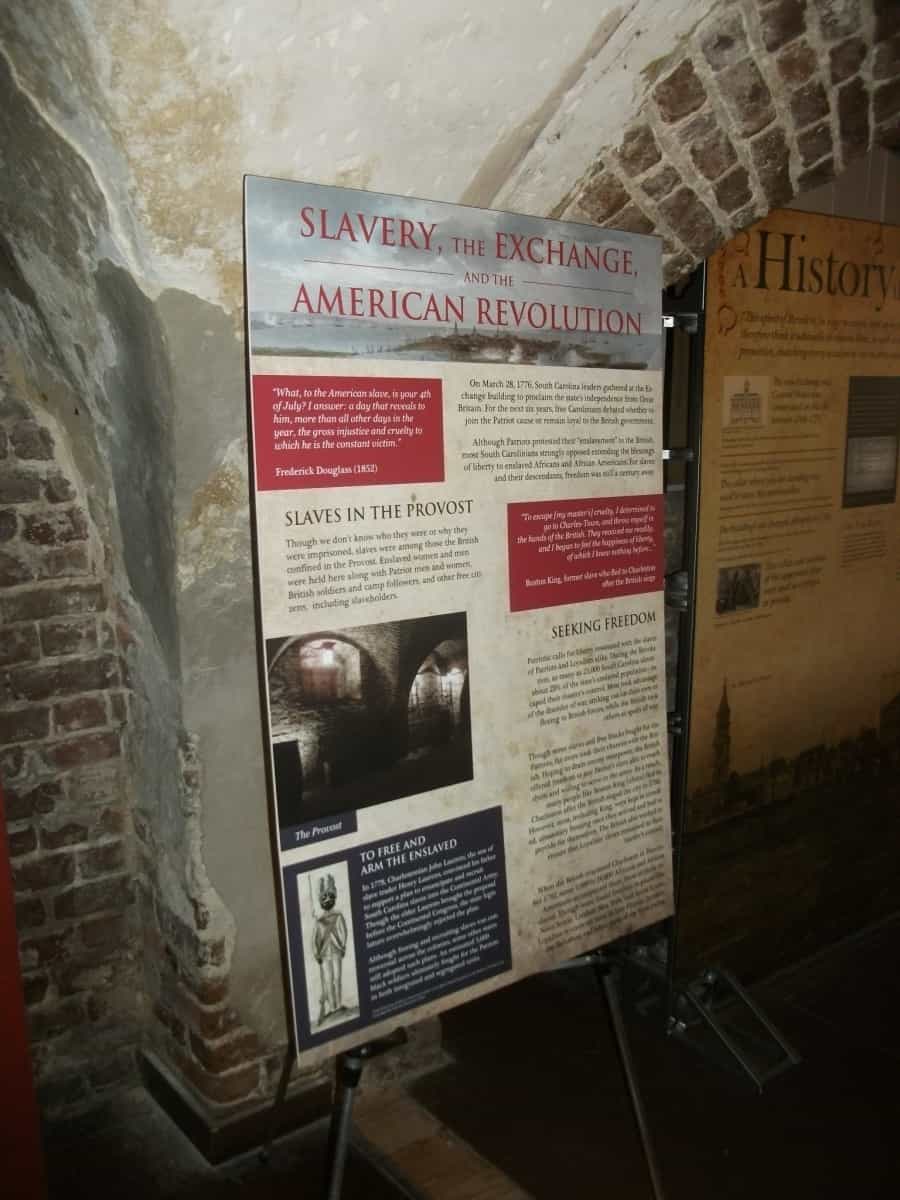The Old Exchange Building in Charleston, SC has recently unveiled new interpretive elements in the building about slavery and slave auctions. The new interpretive elements include new panels on all three floors of the building, a historic marker, and updated docent materials. South Carolina Humanities supported this project with a Mini Grant in September 2015.
The Old Exchange Building is a historic building at East Bay and Broad Streets in Charleston that was built in 1767 and served a variety of civic functions, including as a custom house, public market, and jail. The area around the Old Exchange Building was also one of the most common sites for public slave auctions in antebellum Charleston, a fact that had not been seriously addressed in previous interpretive efforts at the building.
The new panels and other materials share about the role that African Americans played in the history of the Old Exchange Building and what the Old Exchange Building’s historical significance was to local black life, especially the institution of slavery. One panel is titled “Slavery, the Exchange, and the American Revolution,” and another tackles the topic “Painful As It Is True: Slave Auctions at the Exchange.”
Tony Youmans, Director of the Old Exchange Building, said: “This is huge for us – to be able to interpret this. We wanted to start this year with a much more representative sampling of the building’s history, and this is part of it.”
More information about the Old Exchange Building can be found on their website: http://oldexchange.org/. The Old Exchange is open daily from 9:00 a.m. – 5:00 p.m.
The mission of SC Humanities is to enrich the cultural and intellectual lives of all South Carolinians. Established in 1973, this 501(c) 3 organization is governed by a volunteer 22-member Board of Directors comprised of community leaders from throughout the state. It presents and/or supports literary initiatives, lectures, exhibits, festivals, publications, oral history projects, videos and other humanities-based experiences that directly or indirectly reach more than 250,000 citizens annually.
